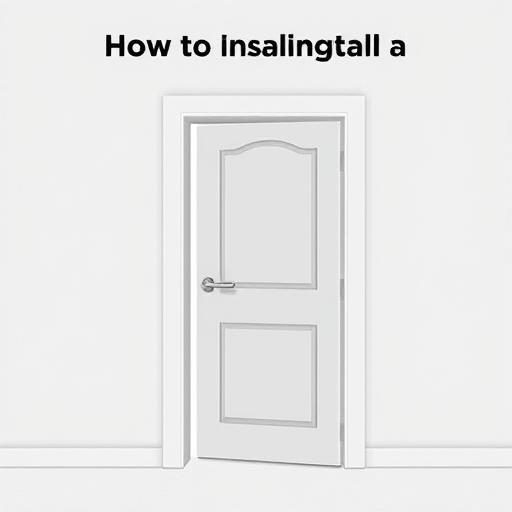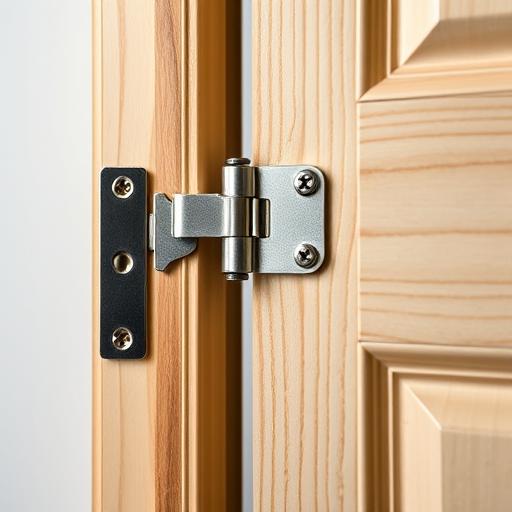How to Install a Pocket Door
Pocket doors are a clever and stylish solution for maximizing space in your home. Unlike traditional doors that swing outward or inward, pocket doors slide into a wall cavity, freeing up floor space while adding a sleek, modern touch. Whether you’re renovating a small apartment or looking to upgrade a bathroom or closet, installing a pocket door can transform the functionality of a room. This guide will walk you through the process step by step, ensuring you have the tools, knowledge, and confidence to complete the project successfully.
What is a Pocket Door?
A pocket door is a sliding door that fits into a recessed space within a wall, disappearing completely when open. Instead of hinges, it uses rollers mounted on a track system, allowing it to glide smoothly. These doors are ideal for compact areas like small bedrooms, home offices, and bathrooms, where every inch of space matters. They also work well in kitchens or laundry rooms for a seamless transition between rooms. Pocket door kits typically include a frame, track, rollers, and hardware, with options for single or double doors, depending on your needs.
Tools and Materials Needed
- Measuring tape and pencil
- Level and laser level (optional)
- Drill and drill bits
- Saw (drywall saw, circular saw, or reciprocating saw)
- Screwdriver and screws
- Shims and wood chisel
- Stud finder and wall anchors (if needed)
- Pocket door frame kit
- Door slab (pre-hung or standalone)
- Drywall or plaster repair materials
- Trim or molding
Pre-Installation Planning
Assess the Space
Before starting, measure the wall thickness and door opening carefully. Most pocket doors require a wall cavity at least twice the width of the door (e.g., a 32-inch door needs a 64-inch wall space). Ensure the area is free of obstructions like electrical wiring or plumbing, which may need relocation.

Choose the Right Door
Select a door slab that matches the frame dimensions and complements your room’s decor. Hollow-core or lightweight composite doors are recommended to reduce strain on the track system. Avoid overly heavy or thick doors unless your frame is designed for them.
Check Wall Structure
Determine whether the wall is load-bearing or not. Load-bearing walls require reinforced framing to support the door’s weight. Use a stud finder to locate studs and ensure the pocket frame can be securely anchored. If unsure, consult a contractor.
ENVO Fineline Pocket Door System Installation
Gather Permits
Some regions require permits for structural changes like pocket door installations. Review local building codes to confirm requirements, especially if modifying load-bearing walls or altering egress points.
Step-by-Step Installation Guide
Prepare the Wall
Remove the drywall or plaster on one side of the opening to expose the studs. Cut the studs to create a cavity for the door frame, ensuring the new opening is level and square. Use shims if necessary to adjust the gap for smooth door movement.
Install the Pocket Door Frame
Assemble the frame according to the manufacturer’s instructions and position it in the wall cavity. Secure it to the studs with screws and double-check its alignment using a level. If the frame is off-level, the door may bind or sag over time.
Hang the Door
Attach the rollers to the door slab’s edges, following the kit’s guidelines. Carefully slide the door into the frame and test its movement along the track. Adjust the rollers or frame as needed to ensure the door glides without friction.
Finish the Installation
Reinstall drywall or plaster around the frame, cutting precise notches for the track hardware. Once dry, sand and paint or finish the wall to match your space. Add trim to cover gaps and enhance the door’s appearance, ensuring a snug fit against the wall.
Common Mistakes to Avoid
Incorrect measurements are the leading cause of pocket door issues. Always measure twice and account for the frame’s depth. Failing to level the frame can result in a misaligned door that doesn’t slide smoothly. Additionally, neglecting to reinforce the wall structure may lead to long-term stability problems, especially in load-bearing walls.
Maintenance Tips for Pocket Doors
Keep the door track clean of dust and debris to maintain smooth operation. Apply a silicone-based lubricant to rollers and hinges every six months. Periodically check the door’s alignment and adjust the track if the door starts to stick or wobble. Avoid using excessive force when sliding the door, as this can strain the hardware.
Conclusion
Installing a pocket door is a rewarding project that combines practicality and design. By following this guide and prioritizing precision, you can enjoy a space-saving solution that enhances your home’s layout. If you encounter structural challenges or uncertainty during the process, don’t hesitate to seek professional assistance. With proper care, your pocket door will provide effortless access and a modern aesthetic for years to come.
FAQ Section
Can I install a pocket door in an existing wall?
Yes, but it involves cutting into the wall to create a cavity. Ensure the wall can accommodate the frame and that you address any wiring or plumbing during the process.
DIY How To Install An Aluminium & Glass Sliding Door
How much space is needed for a pocket door?
The wall must be at least twice the width of the door (e.g., 64 inches for a 32-inch door). This allows room for the frame and the door to slide fully into the wall.
What type of door works best for a pocket door?
Lightweight hollow-core or composite doors are ideal. Solid wood doors may require a reinforced frame and can strain the track system if not properly supported.
Can I install a pocket door myself?
Absolutely! With patience and the right tools, most homeowners can complete the installation. However, complex structural work may require a professional’s help.
How do I fix a sticking pocket door?
Start by cleaning the track thoroughly. Lubricate the rollers and check for warping or debris. If the issue persists, adjust the track or consult a handyman to realign the door.







